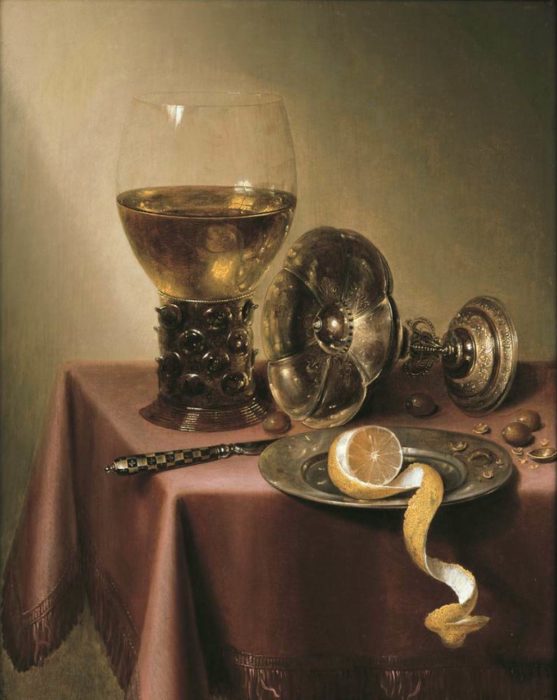
Maerten Boelema, Still-life, oil on panel, 61 x 49 cm., 1642, Private collection. (Photo Credit: Wikimedia Commons. Creative Commons Attribution-Share Alike 3.0).
The work belongs to the monochromatic genre of still-life painting pioneered in Haarlem by Pieter Claesz and William Claesz Heda around 1630s and 1640s. On a maroon coloured tablecloth are breakfast and banquet pieces. On the back left of the table, Boelema portrays a rummer glass, a type of large drinking glass studded with prunts, popular mainly in the Rhineland and the Netherlands from the fifteenth through the seventeenth century. These glasses are often depicted in the still-lifes by Pieter Claesz. Right beside the rummer is a tazza, a saucer-like dish with an ornamented base, that has toppled over. What’s most curious about Boelema’s work is the half peeled citrus, perhaps a lemon, whose peel swirls graciously, falling off the table. Often the objects represented in Boelema’s still lifes also appear in those by Heda, his master. This suggests a sharing of the props in the studio and perhaps even an exchange of props. It appears often that artists from different studios exchanged props: objects featuring in Boelema’s picture also appear in compositions by Pieter Claesz.